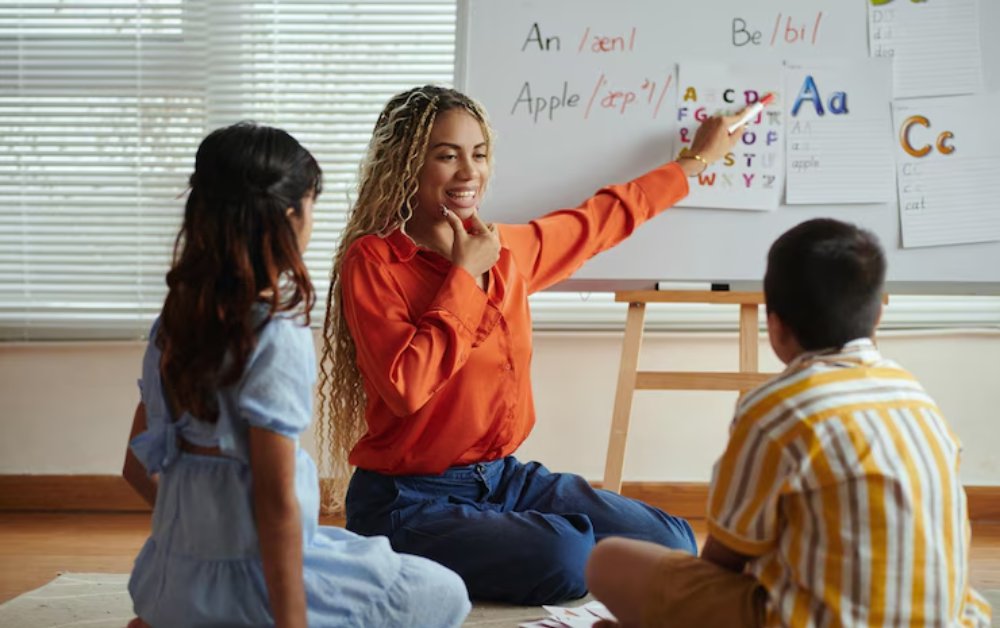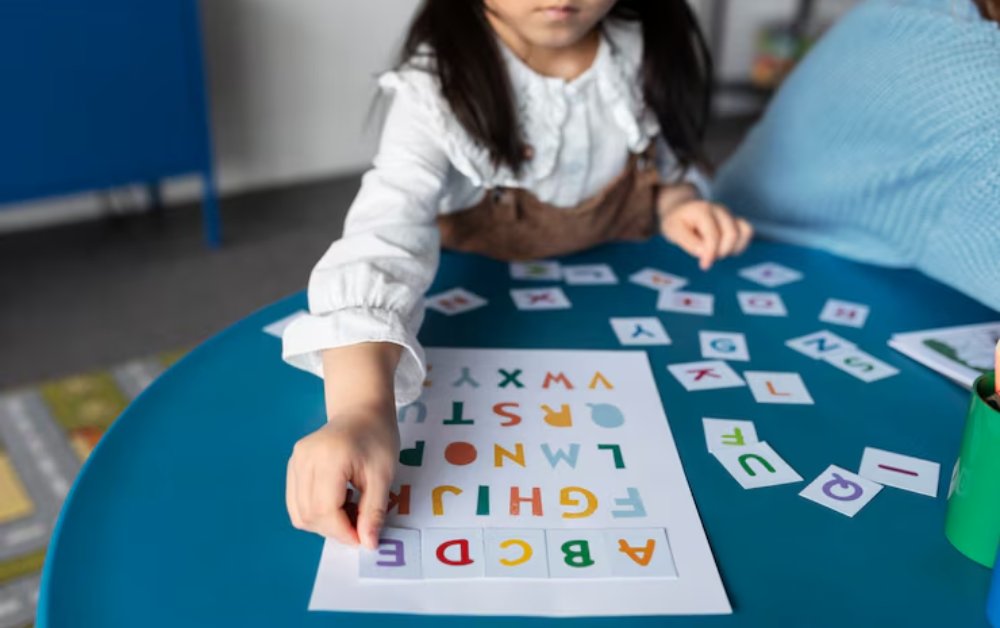
Reading is one of the core skills that determines a child’s educational achievement and lifetime learning. Among the many ways of teaching reading, phonics has consistently emerged as one of the most successful. Phonics is the association between letters and sounds, assisting children in deciphering words by sounding them out. Although most approaches highlight whole word recognition or reading for meaning, phonics is concerned with providing students with the means to comprehend the building blocks of language itself. This blog discusses how phonics plays a part in establishing robust reading skills, outlining its significance, advantage, and real-life application in early reading instruction.

Understanding Phonics
Phonics is a technique for teaching children to read and write by linking sounds with individual letters or combinations of letters. It allows children to build up the skill of decoding unfamiliar words by identifying common sound patterns. For instance, after a child has learned the sound of the letter “c” and the word family “-at,” they can read “cat,” “bat,” and “mat” with greater confidence. Phonics can be taught either synthetically—in which children discover isolated sounds and combine them together—or analytically—in which children deconstruct whole words to discover sub-sounds.
Why Phonics is So Important in Reading Development
Phonics is crucial as it offers the foundation for reading. Once children know how letters relate to sounds, they have the skill to decode words on their own. Decoding enables them to read new words without memorization or guessing. Additionally, phonics enhances spelling since children learn to connect sounds with specific letter combinations. Through mastery of phonics, young readers can handle more complex texts with accuracy and fluency.
Another reason phonics is essential is that it corresponds with the brain’s written language processing. According to neuroscience, effective readers employ brain areas involved in sound-letter correspondence, validating the cognitive advantages of instruction through phonics. Without this groundwork, students encounter difficulties with reading comprehension, fluency, and confidence.
The Benefits of Phonics Instruction
- Better Word Identification: Phonics allows students to recognize words easily and precisely. Once students can decode, they take less time figuring out words and more time to comprehend the text.
- Better Reading Fluency: Reading fluency—reading quickly, accurately, and with correct expression—emerges automatically as students become phonics masters. Decoding automatically means that words will be read more fluently and more expressive.
- Improved Writing and Spelling Skills: As phonics training clarifies the connection between sounds and letters, it promotes correct spelling. When word patterns and word structure are learned, it improves writing skills.
- Improved Vocabulary Building: The more words students decode and read, the more they are exposed to an increasing vocabulary. Phonics provides the foundation for reading independently and is responsible for vocabulary growth.
- Greater Confidence and Motivation: As children can read new words on their own, they become more confident readers. This confidence inspires them to read more, further boosting their literacy skills.
Phonics in the Classroom
Successful phonics teaching is ordered, sequential, and systematic. It typically starts with instruction of basic letter-sound relationships and then moves on to more advanced patterns such as digraphs (e.g., “sh,” “ch”) and blends (e.g., “bl,” “st”). Teachers employ an array of implements like phonics readers, flashcards, songs, games, and interactive computer software to reinforce learning.
Differentiated instruction is also necessary, as the children learn at varying levels. Teachers must test each child’s phonics knowledge and intervene with specific support where appropriate. Collaborative work, individual tutoring, and practical activities can be used to reinforce the understanding of phonics for all students.
Moreover, combining phonics with the other elements of literacy—like comprehension, vocabulary, and writing—guarantees a balanced approach. Although phonics is not exclusively the focus of reading instruction, it is an essential core that underpins all other aspects of literacy.
Phonics Beyond the Classroom
Parents and caregivers are also very important in reinforcing phonics skills in the home. Reading to children, playing word games, and having them sound out unfamiliar words are simple but practical methods of reinforcing phonics in the house. When children experience reading as a rewarding and enjoyable activity, their skills and interests improve much faster.
In addition, the internet and mobile devices now offer interactive means through which kids can practice phonics. These devices feature games, stories, and quizzes that adjust to a child’s level, thus making phonics learning both fun and effective.
Challenges and Misconceptions
Phonics instruction has been shown to work, but it is oftentimes mischaracterized or marginalized. One error is that it leads to mindless memorization or that comprehension and enjoyment in reading are excluded. Phonics is a means—a tool, but not the mission. It supplies the basis upon which reading for fluency and text comprehension begins. When students can decode words easily, meaning, inference and critical thought become their focal points.
The other challenge is maintaining consistency in phonics teaching across various schools and educators. Without coordination, students will likely miss essential knowledge or have knowledge gaps. Continual teacher development and evidence-led curricula are critical for successful delivery.

Conclusion
Phonics is instrumental in developing excellent reading skills by educating children on the fundamental correspondence between letters and sounds. This method enhances fluency recognition, spelling, vocabulary acquisition, and literacy. When taught in a structured and motivational way, phonics enables pupils to become confident, independent readers. With the ongoing pursuit of literacy, adopting phonics as a foundation of reading instruction is not only helpful but also indispensable. Investment in sound phonics programs at school and home builds the foundation for a future in which all children can unleash the potential of reading.
